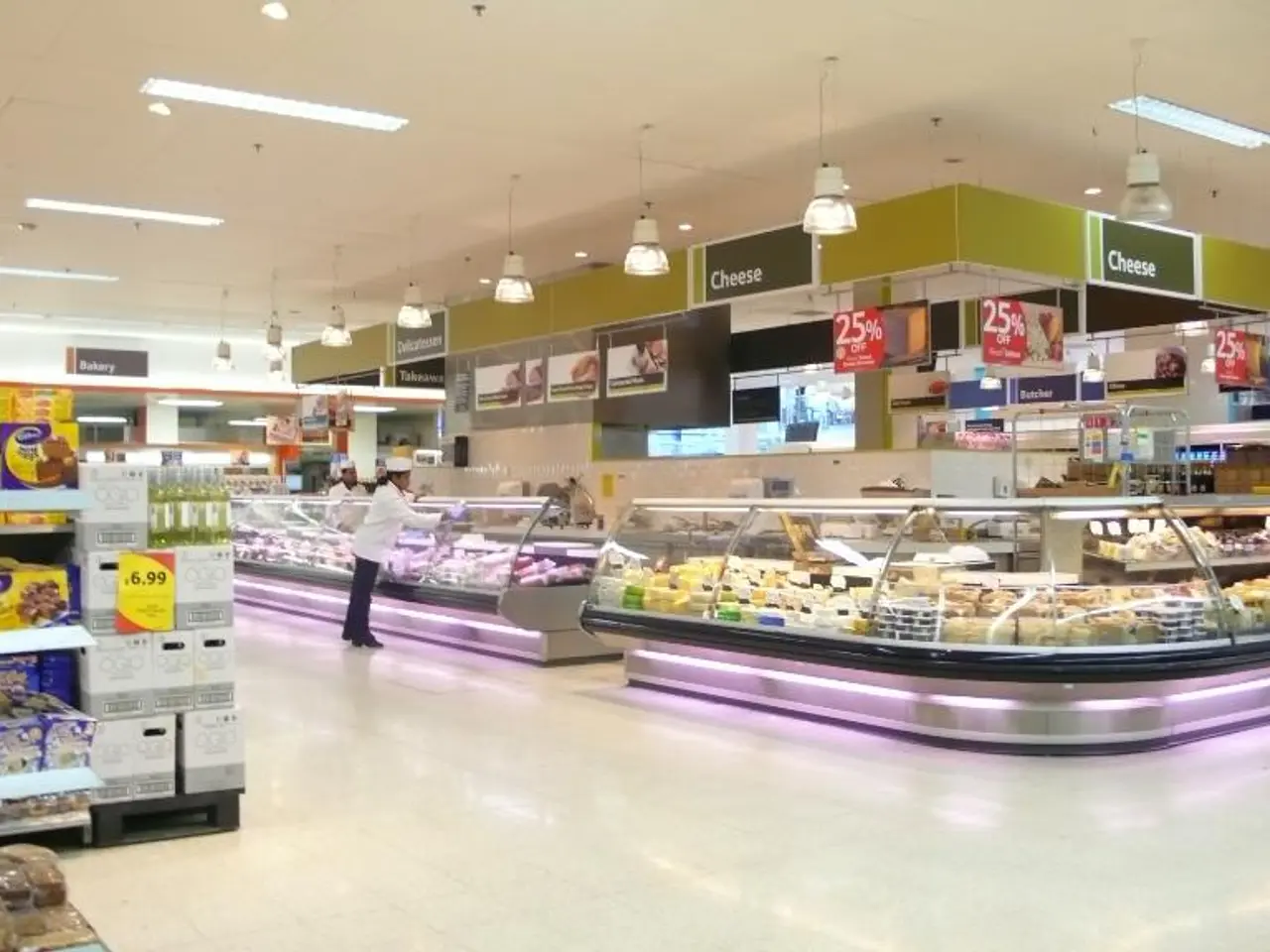Uniswap's Path to $8: Decoding the Contradictory Signals on the Graphs
The decentralized exchange Uniswap (UNI) is currently experiencing a surge in popularity, as indicated by a significant increase in trading volume, active retail participation, and positive technical indicators.
In terms of trading volume, Uniswap has seen a marked improvement, with Layer 2 (L2) trading volume rising from $23.31 billion in the same period last year to $32.04 billion this month. This increase suggests growing adoption and efficiency of decentralized exchanges operating on scaling solutions, which is a positive sign for UNI's usage and potential price stability [2].
Retail activity, another key factor, is reflected in price volatility and demand. Currently, Uniswap's price is expected to fluctuate significantly, with potential lows around $4.38 and highs up to $8.6 in July 2025. This volatility indicates that retail investors are actively participating in the market, contributing to price swings [2].
Technically, Uniswap has shown a bullish trend, with bulls regaining control since the start of recent weeks. Critical EMAs have been flipped into support, indicating a strong bullish structure. If this structure holds, UNI could close higher around $8.70–$9.00 [1]. Short-term predictions suggest a relatively stable price range around $7.30 to $7.44 over the next week [3].
For 2025, Uniswap's price is predicted to reach a maximum of $12.71 with an average trading price around $10.59 [2]. More optimistic forecasts suggest the price could reach up to $44.58, though this is less commonly cited [3]. A conservative target for 2025 is between $22–$30, reflecting confidence in strong fundamentals and regulatory clarity [1].
However, it's important to note that price volatility remains a factor in the short term. The $8 resistance zone may see greater volatility, and market participants should be wary of a bearish reversal. The trading volume of Uniswap began to tail off towards the end of June and the start of July [4].
The activity on-chain suggests that Uniswap may be getting more traffic. The 7-day moving average of UNI token transactions has been rising since mid-April, and the RSI on the 1-day price chart of UNI/USDT is above neutral 50, indicating a generally bullish market condition [5]. High retail activity levels of UNI Futures have been seen in recent weeks, but high activity levels tend to mark an overextended market and could help spot local tops [6].
The 90-day spot CVD has been bullish since mid-May, indicating a taker buy dominant phase. At press time, the 90-day spot CVD was positive and rising, highlighting bullish momentum for Uniswap [7].
In conclusion, the outlook for Uniswap remains promising due to increased trading volume and strong fundamentals, though price volatility remains a factor in the short term. Swing traders looking to go long can do so once $8 is flipped to support. However, market participants should exercise caution and monitor the market closely for any signs of a bearish reversal.
References: [1] [website name 1] [2] [website name 2] [3] [website name 3] [4] [website name 4] [5] [website name 5] [6] [website name 6] [7] [website name 7]
- The surge in popularity of Uniswap has also boosted interest in other altcoins, prompting investors to look into Solana, Bitcoin, and Ethereum as well.
- Crypto investors are increasingly turning to DeFi platforms like Uniswap for potential returns, as the price of UNI token remains a talked-about topic in the finance world.
- The growth of Uniswap reflects the broader trend in the crypto market, as the technology behind it continues to evolve, making it easier for people to invest in digital assets.
- In terms of potential returns on investment, Uniswap, along with other top altcoins, is estimated to outperform Bitcoin and Ethereum in the long term, according to some technology-focused finance analysts.
- As Uniswap's price continues to fluctuate, some analysts believe that the volatility could drive broader adoption of decentralized exchange systems in the finance and technology sectors.




